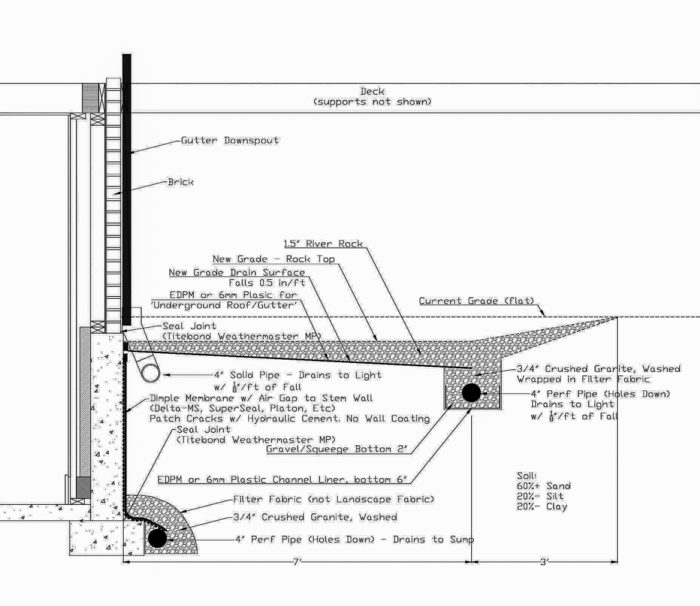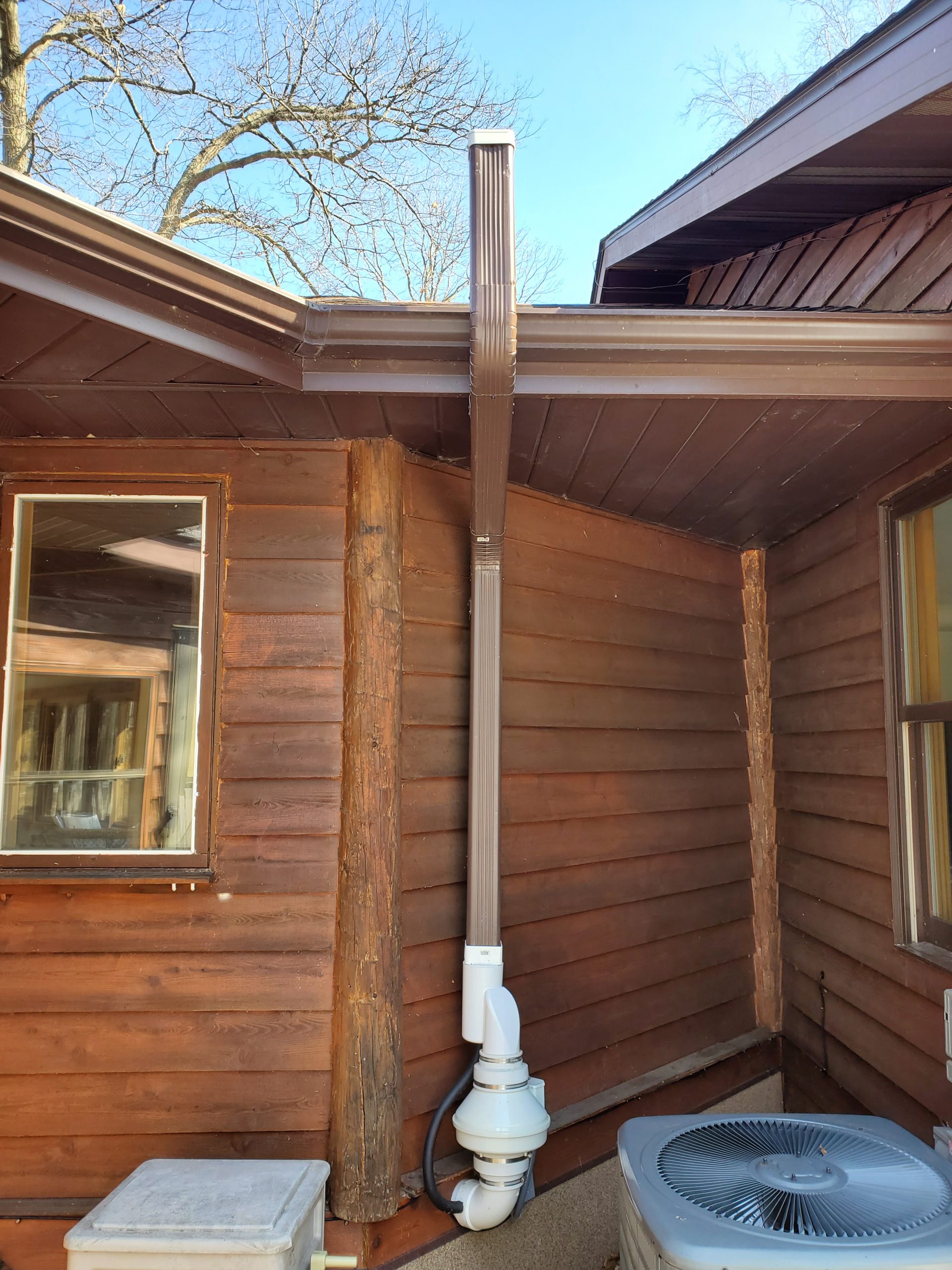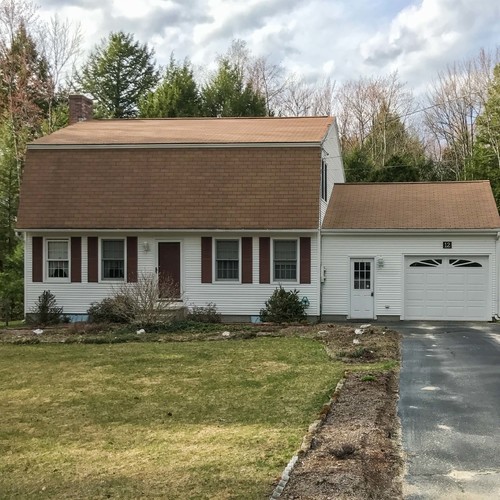
Image Credit: All images: Rossn
Rossn has been remodeling the lower level of his Colorado home and in the process discovered evidence of some moisture and bulk water issues. Although the problems are not severe enough to make the lower level a “wet basement,” Rossn has developed a plan to better manage water near the house, and solve a radon problem at the same time.
In a Q&A post, Rossn outlines his approach in the drawing that appears on the right.
His plan is to connect the radon mitigation system to the sump, and thus the perimeter footer drain, but he’s concerned that the dimple mat on the outside of the foundation will interfere by causing the system to lose suction.
“I’m not sure the trench/French drain approach will work for me near the surface, given my soil is 60% sand and drains easily,” Rossn says. “I added a liner, though am not sure if that will work, and ultimately I’d tie it into the rest of the gutter system.”
The perimeter drain is virtually flat and is as much as 110 feet from the sump. (A plan view of the project is reproduced as Image #2, below).
Will this plan work? That’s the topic for this Q&A Spotlight.
Some changes to consider
GBA Editor Martin Holladay finds Rossn’s approach sound, but he suggests two modifications.
“Your underground roof is a little close to the surface,” he says. “Either erosion or a curious dog digging a hole might expose the underground roof — so if site conditions allow, you might lower the underground roof.”
Holladay also questions Rossn’s intent to connect radon piping to his perimeter drainage system.
“In general, you don’t want to connect a radon mitigation system to any pipe that leads to daylight or is…
Weekly Newsletter
Get building science and energy efficiency advice, plus special offers, in your inbox.

This article is only available to GBA Prime Members
Sign up for a free trial and get instant access to this article as well as GBA’s complete library of premium articles and construction details.
Start Free TrialAlready a member? Log in















3 Comments
Exterior radon system?
To me it seems adding a radon system outside of the foundation is unlikely to make much if any change to interior radon levels. Are there any studies comparing interior and exterior radon systems?
Walta
Basement water and radon
When we build a house we put in double chamber drain tile, we use the top for Radon and the bottom for water. We also put cross over pipes every 6' so the water never gets pluged, water can find its way out. We vent the Radon up through the roof, around the center of the house.
Thanks
Keith
There was a study in Ireland comparing radon in houses built to passive house standards (air tight) and regular construction. it showed that there are benefits to the balanced continuous ventilation (as mentioned by Peter's summation of the Oak Ridge study) to help mitigate radon. As we know making a house more air tight would greatly benefit from balanced ventilation anyway. There was a web presentation of the study a few months back.. I couldn't find a link for it but here is the academic article:
https://pure.ulster.ac.uk/en/publications/radon-levels-and-indoor-air-quality-in-northern-ireland-passive-h
Log in or become a member to post a comment.
Sign up Log in